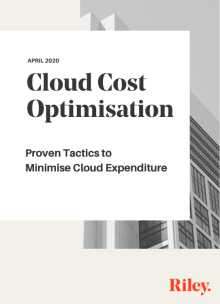Cost optimisation is the continual process of analysis and refinement in reducing your cloud spend. No matter the stage or scale of a cloud project, the principles of cost optimisation apply and maximise results for businesses.
A comprehensive cost optimisation framework, built with analytics, tracking and instance orchestration tools, offers:
Reduced costs. A cost-aware architecture that meets its business objectives will ultimately deliver the highest possible return on investment. Even single optimisations, such as AWS Reserved Instances (RIs) can save up to 75% on your ongoing spend.
Visibility of your cloud services. Cost optimisation tools offer greater accessibility of service-by-service performance, usage and cost data across time, so you can see the bigger picture and investigate the smallest of expenses.
Expenditure attribution. By matching your cloud expenses to projects, teams and revenue streams, you can better understand your spend and evaluate the success of your cloud project.
Simpler, more performant architectures. Cost optimisation involves the consolidation of your services into the most efficient and performant options offered by your cloud provider.
